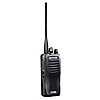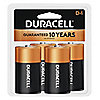- Catalog
- Find A Branch
- KeepStock
- Help
- 1-800-GRAINGER
Sign In
Sign In to access your account information.
Sign In Register for Grainger.comOrder Lookup
Track and check the status of an order.
Order LookupAll Products
Unrelated Links
Product Categories
- All Product Categories
- Abrasives
- Adhesives, Sealants and Tape
- Cleaning and Janitorial
- Electrical
- Electronics & Batteries
- Fasteners
- Fleet & Vehicle Maintenance
- Furnishings, Appliances & Hospitality
- HVAC and Refrigeration
- Hardware
- Hydraulics
- Lab Supplies
- Lighting
- Lubrication
- Machining
- Material Handling
- Motors
- Office Supplies
- Outdoor Equipment
- Packaging & Shipping
- Paints, Equipment and Supplies
- Pipe, Hose, Tube & Fittings
- Plumbing
- Pneumatics
- Power Transmission
- Pumps
- Raw Materials
- Reference and Learning Supplies
- Safety
- Security
- Test Instruments
- Tools
- Welding
Sign In
Sign In to access your account information.
Sign In Register for Grainger.comOrder Lookup
Track and check the status of an order.
Order LookupGenerated from thunderstorms, tornadoes are one of the most violent storms known and can strike with little to no warning. According to ready.gov, windspeeds can reach 300 miles per hour.
Download this checklist to make sure you have the products and resources that can help keep people and property safe in a tornado emergency.
We're in Your Neighborhood - Our network of branches across the U.S. can give you immediate access to what you need to help handle disruptions in your operations. Find your local branch at: grainger.com/branches
![]() Products For Prepare
Products For Prepare
![]() Products For Respond and Recover
Products For Respond and Recover
TIPS TO PREPARE
- Stay alert to the sky and monitor the radio or television for weather updates.
- Look for a persistent rotation in the cloud base and whirling dust or debris on the ground under a cloud.
- Go to the basement or the lowest part of the building in the center of the building. Interior stairwells or small rooms with no windows are best. Avoid windows!
- Crouch as low as possible, face-down and cover your head.
TIPS TO RESPOND AND RECOVER
- As with any event, give first aid to the injured and only move them if they are in danger by remaining where they are.
- Be alert to safety issues created by the devastation of the storm. Avoid entering any buildings with structural or other visible damage until authorized to do so by local officials.
- Immediately report any gas leaks, downed or damaged electrical wires, and spilled chemicals or other potentially hazardous materials to authorities or the utility companies.
- Use caution when walking through debris. Watch for animals, broken glass and other materials, or spilled liquids that could cause injury or illness.
- First take care of your family’s and employees’ health. Activate your communication plan to ensure that everyone is safe and receiving the support they need immediately after the event, and throughout the recovery phase.
- Repair and rebuild to mitigate damage to your facility from future disasters. Work with contractors to reinforce windows and doors. Reinforce and secure siding and roofs, and all tie-downs or anchoring for exterior equipment and movable structures.
![]() Resources
Resources

DEPARTMENT OF HOMELAND SECURITY PREPAREDNESS FOR BUSINESS


 Tornadoes
Tornadoes 

























